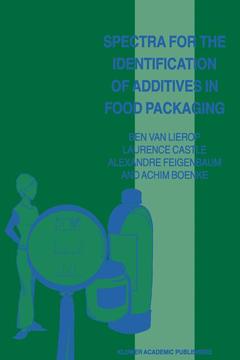Acids, fatty (C14-C18), alkyl (C14-C18) ester.- Acrylic acid, 2-tert-butyl-6-(3-tert-butyl-2-hydroxy-5-methylbenzyl)-4-methylphenyl ester.- Adipic acid, bis(2-ethylhexyl) ester.- Adipic acid, dibutyl ester.- Alkyl (C10-C13)benzenesulphonic acid, sodium salt.- Alkyl (C10-C20)sulphonic acid, esters with phenols.- Azelaic acid, bis(2-ethylhexyl) ester.- Azelaic acid, bis(6-methylheptyl) ester.- 2,5-Bis(5-tert-butyl-2-benzoxazolyl)thiophene.- N,N?-Bis(3-3,5-di-tert-butyl-4-hydroxyphenyl) propionyl) hydrazide.- Bis(2,4-di-tert-butylphenyl)pentaerythritol diphosphite.- Bis(4-ethylbenzylidene) sorbitol.- N,N-Bis(2-hydroxyethyl)alkyl(C8-C18)amine.- N, N?-Bis(2-hydroxyethyl)lauramide.- 2,4-Bis(octylmercapto)-6-(4-hydroxy-3,5-di-tert-butyl-anilino)-1,3,5-triazine.- 2,4-Bis(octylthiomethyl)-6-methylphenol.- Bisphenol A.- tert-Butyl-4-hydroxyanisole.- Citric acid, triethyl ester.- Dibenzothiazyl disulphide.- 2,6-Di-tert-butyl-p-cresol.- 3,5-Di-tert-buty 1-4-hydroxybenzylphosphonic acid, monoethyl ester, calcium salt.- 2,4-Dihydroxybenzophenone.- 4,4?-Dihydroxybenzophenone.- Di-n-octyltin bis(2-ethylhexyl mercaptoacetate).- Di-n-octyltin bis(isooctyl mercaptoacetate).- N, N?-Diphenylthiourea.- Dodecylbenzenesulphonic acid.- Erucamide.- 2-Ethoxy-2?-ethyloxanilide.- Ethylbenzene.- N,N?-Ethylenebisstearamide.- Ethyleneglycol bis(3,3-bis(3-tert-butyl-4-hydroxyphenyl)butyrate).- 2-Ethylhexanoic acid.- Gallic acid, propyl ester.- Glycerol monooleate.- Glycerol monostearate.- Glycerol triacetate.- 1,6-Hexamethylene bis(3-(3,5-di-tert-butyl-4-hydroxyphenyl)propionamide).- 1,6-Hexamethylene bis(3-(3,5-di-tert-butyl-4-hydroxyphenyl)propionate).- 4-Hydroxybenzoic acid, methyl ester.- 2-(2-Hydroxy-3,5-bis(l, l-dimethylbenzyl)phenyl) benzotriazole.- 2-(2-Hydroxy-3-tert-butyl-5-methylphenyl)-5-chlorobenzotriazole.- 1-(2-Hydroxyethyl-4-hydroxy-2,2,6,6-tetramethyl piperidine-succinic acid, dimethyl ester, copolymer.- 2-Hydroxy-4-methoxybenzophenone.- 2-(2-Hydroxy-5-methylphenyl)benzotriazole.- 2-Hydroxy-4-n-octyloxybenzophenone.- 2,2?-Methylenebis(4-ethyl-6-tert-butylphenol).- 2,2?-Methylenebis(4-methyl-6-tert-butylphenol).- 2,2?-Methylenebis(4-methyl-6-cyclohexylphenol).- Monochlorobenzene.- 1-Octadecanol.- Octadecyl 3-(3,5-di-tert-butyl-4-hydroxyphenyl) propionate.- Oleamide.- Hydrocarbon waxes, paraffin and microcrystalline (hydrogenated).- Pentaerytritol tetrakis(3-(3,5-di-tert-butyl-4-hydroxy-phenyl)propionate).- 2-Phenylindole.- Phosphoric acid, diphenyl 2-ethylhexyl ester.- Phosphoric acid, tributoxyethyl ester.- Phosphoric acid, tributyl ester.- Phosphoric acid, triisobutyl ester.- Phosphoric acid, triphenyl ester.- Phosphoric acid, tris(2-ethylhexyl) ester.- Phosphorous acid, tris(2,4-di-tert-butylphenyl) ester.- Phosphorous acid, tri(nonyl-and/or dinonylphenyl) ester.- Phthalic acid, benzyl butyl ester.- Phthalic acid, bis(2-ethylhexyl) ester.- Phthalic acid, dibutyl ester.- Phthalic acid, dicyclohexyl ester.- Phthalic acid, diethyl ester.- Phthalic acid, diisobutyl ester.- Phthalic acid, diisodecyl ester.- Phthalic acid, diisononyl ester.- Phthalic acid, diisooctyl ester.- Phthalic acid, dimethyl ester.- Polydimethylsiloxane.- Polyethyleneglycol ether of tallow fatty alcohol.- Polyethylene propylene)glycol.- Polyolefins.- Poly[6-[(l, 1,3,3-tetramethylbutyl)amino]-l,3,5-triazine-2,4-diyl]-[(2,2,6,6-tertramethyl-4-piperidyl)imino]hexamethylene[(2,2,6,6-tetramethyl-4-piperidyl)imono].- Sebacic acid, bis(2-ethylhexyl) ester.- Sebacic acid, dibutyl ester.- Sorbitan monolaurate.- Sorbitan monooleate.- Sorbitan monostearate.- Stearamide.- Stearic acid, butyl ester.- Stearic acid, esters with pentaerytritol.- Stearoylbenzoylmethane.- Sulphosuccinic acid, bis(2-ethylhexyl) ester, sodium salt.- Tetrakis(2,4-di-tert-butylphenyl)-4,4?-biphenylylene diphosphonite.- 4,4?-Thiobis(6-tert-butyl-3-methylphenol).- Thiodiethanol bis(3-(3,5-di-tert-butyï-4-hydroxyphenyl) propionate).- Thiodipropionic acid, didodecyl ester.- Thiodipropionic acid, ditetradecyl ester.- Triethyl acetylcitrate.- Triethyleneglycol bis(3-(3-tert-butyl-4-hydroxy-5-methylphenyl) propionate).- 1,1,1-Trimethylolpropane.- 1,3,5-Trimethyl-2,4,6-tris(3,5-di-tert-butyl-4-hydroxybenzyl)benzene.- 1,3,5-Tris(3,5-di-tert-butyl-4-hydroxybenzyl)-l,3,5-triazine-2,4,6(lH,3H,5H)-trione.- in CAS number order.- Polymer abbreviations.




